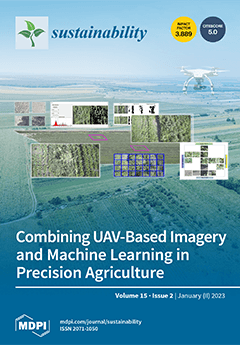A current strategy in material science and nanotechnology is the creation of green metal oxide nanoparticles.
Citrus aurantium peel extract was used to create aluminium oxide nanoparticles (Al
2O
3 NPs) in an efficient, affordable, environmentally friendly, and simple manner. Various characterisation
[...] Read more.
A current strategy in material science and nanotechnology is the creation of green metal oxide nanoparticles.
Citrus aurantium peel extract was used to create aluminium oxide nanoparticles (Al
2O
3 NPs) in an efficient, affordable, environmentally friendly, and simple manner. Various characterisation methods such as UV-vis spectrophotometer (UV), X-ray diffraction (XRD), Fourier transform infrared spectroscopy (FT-IR), and field emission scanning electron microscopy (FE-SEM) were utilised to assess the morphology of Al
2O
3 NPs. The elemental composition was performed by EDX analysis. Using the well diffusion method, Al
2O
3 NPs’ antimicrobial properties were used against pathogenic organisms. The antiproliferation efficacy of a neuronal cell line was investigated using the MTT assay. The photocatalytic activities were studied against methylene blue dye. In this study, Al
2O
3 NPs were found to have an average crystallite size of 28 nm in the XRD, an absorption peak at 322 nm in the UV spectrum, and functional groups from 406 to 432 in the FT-IR spectrum, which were ascribed to the stretching of aluminium oxide. Antimicrobial efficiencies were observed against
Pseudomonas aeruginosa [36 ± 2.12],
Staphylococcus aureus [35 ± 1.23],
Staphylococcus epidermis [27 ± 0.06],
Klebsiella pneumonia [25 ± 1.65],
Candida albicans [28 ± 1.06], and
Aspergillus niger [27 ± 2.23], as well as the cell proliferation of a PC 12 cell line (54.09 at 31.2 μg/mL). Furthermore, photocatalytic degradation of methylene blue dye decreased up to 89.1 percent after 150 min. The current investigation concluded that biosynthesised Al
2O
3 NPs exhibit feasible antimicrobial, anti-proliferative, and photocatalytic behaviours.
Full article





